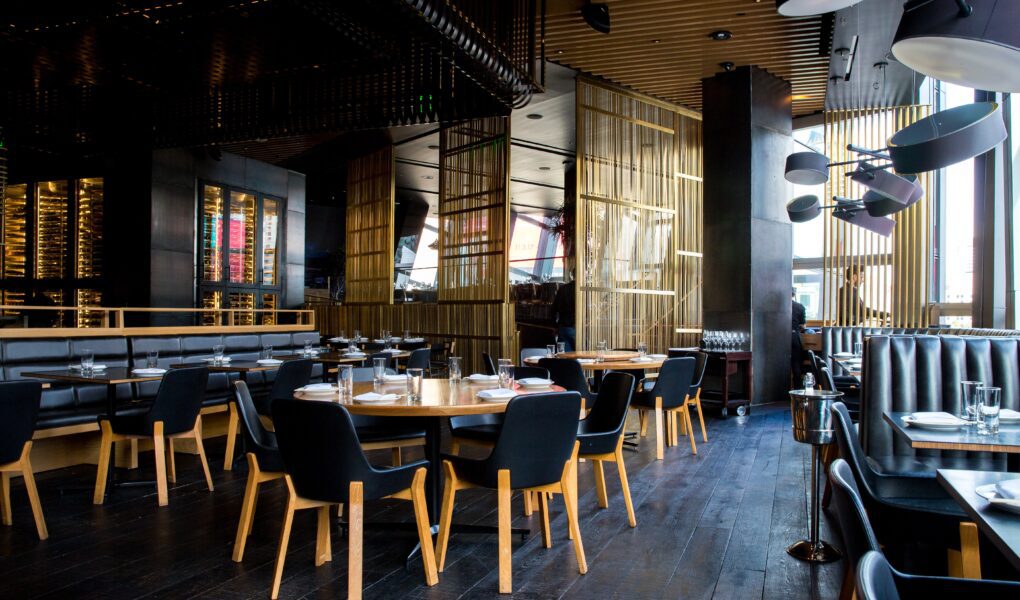Going green is the new black…and restaurants are starting to take notice! According to a study done by the National Restaurant Association, 73% of restaurateurs agree that sustainability is important to their business.
What does that look like for restaurant owners, though? How can one go about making a high-traffic establishment more eco-friendly? Read on to discover some simple ways that restaurants can decrease their carbon footprint:
- Eco-Conscious Restaurant Construction
Sustainability has taken center stage in the engineering industry— Since restaurants make up a significant portion of US infrastructure, going green in the cuisine scene can make a big difference:
- Environmental Surveys
If you’re in the process of constructing a new restaurant, there are a few things you can do to ensure it interferes with the local ecosystem and larger environment as little as possible.
First, consider conducting an environmental survey to assess the impact your construction will have on the surrounding area. This will help you identify any potential environmental hazards and take steps to mitigate them.
- Building Materials
Second, pay close attention to the materials you use and opt for sustainable and recycled materials whenever possible. For example, using bamboo for flooring or countertops is a great way to add an eco-friendly touch to your restaurant.
After your construction is complete, be sure to bring any excess materials to a green disposal site. You can often buy sustainable building materials from the same place, such as recycled asphalt and other composites!
- Smart Sourcing of Ingredients & Other Inventory
When you pause and reflect on where your ingredients and other inventory come from, it becomes clear that the environmental impact of your operations reaches beyond the walls of your business:
- Food Sourcing
One of the most far-reaching actions a restaurant can take to stop the destruction of our planet is to source its ingredients responsibly. This entails buying from local farmers and purveyors whenever possible and sourcing meat and seafood from suppliers that practice sustainable farming methods.
Not only will this reduce the carbon footprint of your cooking, but it also supports the local economy! There is a growing customer base that specifically seeks out locally-sourced craft cuisine, so your bottom line likely reap the benefits as well.
- Napkins, Take-Out Packaging, & Other Disposables
The use of disposable items is often unavoidable in the restaurant business! However, there are some steps you can take to reduce your impact. If your operations require paper napkins, opt for a type made from recycled paper or sustainable material like bamboo.
For take-out packaging, try to find biodegradable options made from compostable materials. Avoid using plastic straws and utensils and order eco-friendly alternatives instead.
- Energy Efficiency
Restaurants tend to be high-energy establishments, both literally and figuratively. To conserve Earth’s natural resources and stop excess carbon emissions from entering its atmosphere, it is important to make your electricity work smarter and not harder:
- Lighting & Power Usage
One of the simplest ways to run a green-collar restaurant is to make smarter use of the energy that is available to you. Natural lighting is a great way to brighten up your space and cut down on power usage!
For spaces that do call for artificial lighting, energy-efficient bulbs are the greenest way to go. You could also install occupancy sensors in areas like bathrooms and storage rooms so the power automatically shuts off when they are not in use.
The kitchen is another key area where you can save on energy and resources. Make sure all of your appliances are properly maintained and running at peak efficiency, as well as use Energy Star-certified models whenever possible.
- Water Usage
Restaurants use a lot of water! If you want to reduce your carbon footprint, it is crucial to be conscious of your usage. One way to do this is to install low-flow fixtures in your kitchen and bathrooms.
Installing automatic shut-off valves on all sinks and faucets will also help to prevent water waste. Last but not least, make sure all of your plumbing is in good working order and that there are no leaks.
Making your restaurant greener from the ground up will not only nurture the planet—but also your bottom line! According to surveys, over 70% of millennial and Gen Z consumers seek out sustainable products and services and are willing to pay more for them than their harmful counterparts.
So, what are you waiting for? Join the global eco-awakening! Whether you are opening a new restaurant or want to give your current one a green makeover, you can start…
- shrinking your carbon footprint
- appealing to customers who are looking for sustainable dining options
- setting an example for others in your community to go green
…by trying out these simple tips today!
slot gacor desa4d slot gacor malam ini slot gacor hari ini slot gacor hari ini slot bet 200 sbobet judi bola slot gacor 2024 miyabislot bet kecil desa4d situs maxwin situs maxwin desa4d desa4d desa4d desa4d desa4d desa4d desa4d desa4d desa4d desa4d desa4d desa4d desa4d desa4d desa4d desa4d desa4d desa4d desa4d desa4d desa4d desa4d desa4d desa4d desa4d tawaslot tawaslot tawaslot tawaslot tawaslot slot bet 200 situs slot gacor malam ini slot 200 miyabislot miyabislot miyabislot miyabislot miyabislot miyabislot miyabislot miyabislot miyabislot



